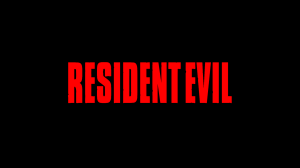We live in the shadow of a weekend spent in celebration of comics’ strongest and most iconic woman. It is fitting, then, that this edition of Pipeline is dedicated to —
Videos by ComicBook.com
— She-Hulk.
Someday, I’ll learn what it means to “tie in” to something properly.
A Brief History of She-Hulk

John Byrne did his amazing runs on the character in the late 80s and early 90s. They’re fabulous fourth-wall breaking issues with a bizarre and obscure series of guest stars (Rocket Raccoon?!?) that are hilarious, to this day. They feature some great Byrne art, memorable gags, and one-of-a-kind stories for comics at the time.
Superhero humor comics have always been tricky beasts. Few have managed to pull it off in a commercially successful way. Deadpool owns the space these days, but 25 years ago you had “She-Hulk” and the now classic “Bwah-Ha-Ha” era of “Justice League International.”
Dan Slott picked up the baton 12 years ago with another memorable run on the character, putting her deeply into the continuity of the Marvel Universe and creating a Marvel geek’s dream-come-true comic. Coupled with some memorable character turns — Awesome Andy! — the reverence for the Marvel Universe made for a smart and entertaining comic that, for as long as it lasted, should have lasted longer.
It also featured the artwork of Juan Bobillo, who didn’t draw enough issues but left a memorable impression for the ones he did. His style was completely unlike everything else at Marvel at the time, but it fit the series well.
The Art of the Most Recent She-Hulk

Recently, Charles Soule — an actual lawyer! — spent a year with Shulkie and told a twelve issue story with her role as a lawyer once again being front and center. While it leaned heavily on certain corners of the Marvel Universe, it didn’t feel quite as geeky about continuity and history as Slott’s run did.
But it was no less fun, still relied on less popular Marvel characters, and again included an artist whose style resembled nothing else in the House of Ideas at the time. That’s Javier Pulido, whose style takes a turn in this series towards “Love and Rockets.”
It’s all topped off by a series of beautifully-painted and creative covers by Kevin Wada.
Pulido’s art style is one that I’m sure turned off a number of Marvel faithful. It looks like something out of an indy/Fantagraphics/extremely-low-selling Image Comics book. I’m not sure how to describe it past that. You’ll recognize the style instantly if you see just a single page.

Where Pulido shines, though, is in the storytelling and page layouts. Those are rarely boring. He does great two page spreads with characters spilling out across the page, and segments of the story happening in discreet chunks on the page. He incorporates the sound effects into his art when it’s appropriate. Credits are imaginatively incorporated into the title pages. Picture the stuff that Marcos Martin likes to do, and you can get an idea for the scope of it here.
But, yeah, this will require some buy-in for you to enjoy it. It won’t be for everyone. I feel like I’m dancing around this, because I’m so torn. I admire his storytelling choices and layouts, but there are lots of panels throughout the series where his style makes for awkward or flat looking individual images.

There’s a two-parter at the end of the first volume that’s drawn by Ron Wimberly. It’s even, er, more different looking. While I appreciate some of the more extreme angles he used in panels, his style, itself, veers a little too far off into that indy style than I think worked for the book. It’s like Trencher-era Keith Giffen mixed with Eric Canete and maybe a touch of the Pander Brothers.
It’s a very important two-parter to the series, over all, because it digs into the mystery of “The Blue File,” a case that runs throughout the 12 issues and promises some explosive history that nobody seems able to remember.
The She-Hulk Story
Soule shines in this book when he incorporates the legalese into the book in believable ways. It’s not overly technical, but it is believable. There’s no obvious gaffes that even a layman would spot a mile away. And, even better, Soule doesn’t rely on the big courtroom showdown for all the drama until the next-to-last storyline, where it’s not just deserved, but required by the characters involved. (Seriously, it’s Jennifer Walters and Matt Murdock facing off in court over Captain America. That’s drama for you!)
It’s much more realistic to deal with how the law usually works: a series of conversations and negotiations and arbitrations. Most people don’t want to sit in court all day, nor do they want to be subject to the whims of 12 people in a jury box. Sometimes, it’s just all paperwork.
Some pages can get very talky at times, but Soule does a good job in mixing those up with less dense pages, and of course the occasional round of fisticuffs that’s only accompanied by sound effects and grunting.

He incorporates a bunch of B-list and lower characters into the story, along with more high profile superhero stars. He brings in Hank Pym, Tony Stark, Matt Murdock, and Steve Rogers. But he also squeezes in Patsy Walker, Tigra, Titania, Shocker, Nightwatch, AIM, Howard the Duck, Victor Von Doom’s son, and more. It’s a good mix.
Breaking It Down

Structurally, the book is broken down into a series of 1, 2, and 3 part stories. In a day and age where everything is six issues, that’s a nice touch, to be honest. Nothing needs to be padded out, and nothing needs to get cut. The storylines just roll one into the other, while serving an overall twelve issue arc.
The final two-parter of the run wraps up the case, but it’s also the closest the book gets to standard superheroic adventure. What should be the most exciting story of the series is not. Getting through that story feels a bit like walking through a comic you didn’t read from thirty years ago, but have read a hundred stories just like it since. Truth be told, after the whole story is laid out, I’m still not 100% sure I understand it all. But I hand wave it away as superhero science and just move on.
That said, the opening fight in issue #11 between Titania and She-Hulk is an awesome use of the comics format. We see She-Hulk get punched from Brooklyn to The Palisades with the aid of a map underneath her. That’s only after she’s shot out of a building and through many floors in a cutaway image. It’s all good stuff.
“The Blue File” mystery is almost a MacGuffin. Yes, we do get an explanation for it, but the most exciting part of it is everything that happens around it, not in it.
It’s good to get the mystery wrapped up, though, and there are a few character moments in there that are worth it.
Other stories include a patent suit against Tony Stark that only She-Hulk can fix, a new shrinking ray that its creator wants to keep away from Hank Pym, and a political refugee from Latveria who happens to be Doctor Doom’s son. They’re all great concepts for stories, and Soule shines with them.
The aforementioned Captain America story is the dramatic high point of the series. It’s so dramatic that the comedy sometimes suffers for it, but you don’t realize it until it’s over because the drama was so good.
Get It Today

The series is reprinted across two trade paperbacks, titled “Law and Disorder” and “Disorderly Conduct”, each with six issues.
It’s also available digitally at the usual places.
It’s another great mix of law, superheroics, and Marvel Universe history that the character always does so well with the right creators. Soule and Pulido do a great job of it here.
PipelineComics.com|| Twitter || Instagram || E-mail









